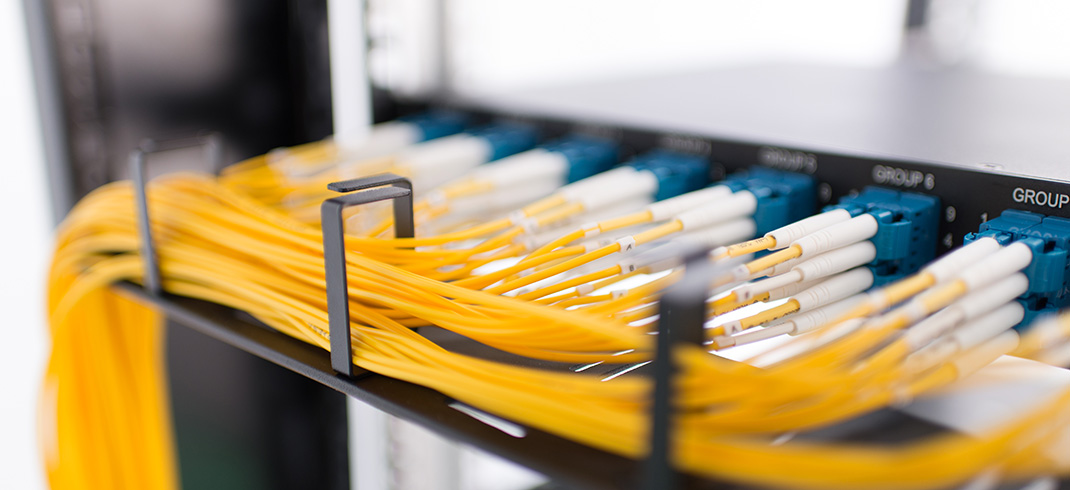With the growing demand for businesses and homes today to stay connected, a reliable internet connection is a must. In fact, not too long ago, UK’s Department for Digital, Culture, Media & Sport mandated internet providers to give all their customers access to high speed broadband by 2020. They noted how modern times made fast and reliable internet connection a necessity for everyone.
Over the past months, several ISPs and network operators in the country have appeared to be open to the possibility of adapting full fibre optic broadband cables in the future for fixed line connectivity.These cables are optimized to have a greater data handling capacity so they would not cause the same connectivity and performance issues that traditional copper cable connections have.
The Science Behind Fibre Optic Cables
So what are fibre optic cables and how do they work? They are made of thin strands of glass or plastic, and make use of laser light technology to transmit data. These fibres have mirror coating inside its cladding, and an outer sheath to preserve cable quality.
Signals are then transmitted in pulses of light via the core of the cable. They then bounce off the mirror-coated cladding before finally getting distributed to the bends in the cable. Since fibre optic cables use light to transmit data, they are not prone to electrical interference. Likewise, they transmit data faster so users end up with high speed internet access.
Types of Fibre Optic Cables
Fibre optic cables can be classified under several types, such as:
- Single mode – provides fast and dependable data transmission even over long distances. Utilizes only one channel for the light to travel. Comes in gigabit speed distances of up to five kilometers.
- Multimode – typically used for internal networking and makes use of multiple paths for light to travel. Comes in gigabit speed distances of up to 500 meters.
- Glass – first material used to make fibre cables. Powerful and capable of delivering fast transmission speeds. Must be handled with skilled hands to avoid damage. Can handle different wavelengths of light.
- Plastic – provides a more affordable connection option, but often times at a slower speed. Allows for easy cutting and installation.
How Fibre Optic Networks Came to Be
The use of fibre optic cables is not a new concept. Its history can be traced as far back as the 1960s, when Sir Charles Kao thought of transmitting data at the speed of light through glass fibres. It then became commercially accepted in the late 1970s, afterwhich it started undergoing several developments. Then in 1988, the first transatlantic fibre was used for telephone calls. Around this time, fibre optic cables were reserved for use in major infrastructures due to its high cost.
Around the 90’s, fibre optic cables started becoming more accessible and affordable to businesses. As of present time, network providers and their customers are recognizing the benefits of using fibre in place of copper for their products. In the coming years, it is predicted that more people will be making the shift.
Benefits of Using Fibre Optic Cables
Much have been said about how fibre broadband will change the way people connect to the outside world. But what exactly are the benefits of choosing fibre optic cables for your network connection?
- Zero chances of interference between cables and from outside.
- They retain data integrity extremely well.
- They are suitable even for electrically noisy environments.
- Fibre optics are not a fire hazard so they are safe to install even in risky environments and working conditions.
- Due to its resilience, fibre optic connections come out cheaper than copper cable connections in the long run.
Drawbacks of Using Fibre Optic Cables
Despite its many benefits, using fibre optic cables has its own set of disadvantages as well. Even if there are only a few, one must take these into consideration so they can make the necessary adjustments:
- Fibre optic cables may lose signal when used over longer distances.
- One may need to pay extra to get boosters installed to prevent speed loss if he/she plans to use it over longer distances.
- Extra care must be practiced during installation as a fibre’s structure is not as malleable.
Important Things to Consider When Getting a Fibre Connection
- Check whether it is already available in your area and which speed you qualify for. Just because a certain fibre broadband connection is working well for your neighbors, it does not mean that it will work for you the same way.
- Upon confirming availability, make sure that the location you will install it in is safe and secure. This is to protect your network from possible privacy breaches and attacks.
- Check the speed. Fibre connections come in a variety of speed so select one the fits your needs.
- See to it that it will last long in the environment and conditions you plan to use it in.
- Shop around different fibre broadband providers to see which one will give you the best package for your budget.
- Be mindful of what causes speed loss and adapt precautionary measures during installation to prevent it. According to TVNet Limited, decrease of speed in fibre optic networks may be caused by:
- Cable length
- Number of connections
- Transmitter power
- Quality of signal source
So if you must, ask an experienced installer to perform an Optical Loss Self Test (OLTS) to gauge the amount of loss that can occur in your fibre optic circuit. After which, consult him regarding which approach will best prevent that loss from happening.
